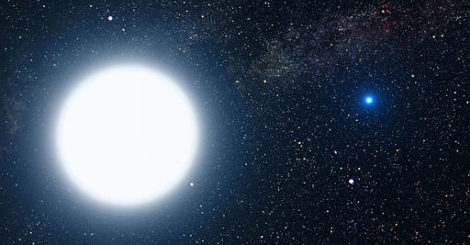
Stars work hard every day, fusing atoms together so that the universe has more interesting materials to work with beyond hydrogen. That same process can eventually lead to a star going nova, sending those fusion-forged atoms into the cosmos. So if you’re looking for heavy elements, stars may not be the best place to look; instead those element accumulate in planets and other, less stellar celestial bodies. That’s great for planet-dwellers like us; for example, the iron-rich core of the Earth spins and creates a magnetic field which shields us from cosmic radiation. When a tasty planet full of interesting elements wanders too close, though, stars can’t help themselves and gobble those planets up, right down to the not-at-all-chewy iron center.
Now of course, stars don’t have appetites or cravings, and they don’t need iron or other heavy elements. (In fact, there are a surprising number of articles like this one asking whether you can kill stars with iron.) But if a planet went the way of Icarus and strayed to close to a star, gravity could pull a significant portion of the planet’s raw materials to its surface, possibly changing its chemical composition. In a twin study (apparently not just for biology), astronomers compared binary star pairs and found some of them (20-35%) had chemical signatures in their outermost layers that were substantially different between members of the same pair. The pairs were chosen so that they’d most likely be at the same stage and thus have the same composition. The observed differences thus may have some other cause. A convenient source would be planets that used to be in the neighborhood.
Notably, this does not seem to have happened with our own sun. For one, it does not bear the chemical signatures observed in these other stars. For another, well, we’re here. So at the very least, that’s one planet our sun did not subsume. And mostly, that’s the reason I wanted to share this particular story. Sure, it was interesting to learn a bit more about stellar formation, and the methodology seemed clever (although perhaps this is just as common in astronomy as in genetics and psychology). But mostly, I just thought perhaps you could also use the pick-me-up reminder that hey, God provided a planet for you to live on that has plenty of protective iron and was not consumed by a star. It is easy to focus on things that have gone wrong and forget about all the things that could have gone wrong that didn’t. Genuinely, I think it is helpful to be thankful for those kinds of counterfactual blessings from time to time, and I hope you find this particular example uplifting.
Given the ongoing discussion of boosters, I wanted to follow-up on last week’s post. As I indicated, the booster conversation makes most sense to me if we are attempting to cut down on transmission; boosters may not be the most effective way to do that, but better alternatives may require the participation of the unwilling. If we are just talking about preventing illness in the already-vaccinated, then I think the case for a different prioritization aimed at the unvaccinated around the world is stronger. And for those who are immunocompromised, the discussion is entirely different and third doses are clearly recommended.
Andy has worn many hats in his life. He knows this is a dreadfully clichéd notion, but since it is also literally true he uses it anyway. Among his current metaphorical hats: husband of one wife, father of two teenagers, reader of science fiction and science fact, enthusiast of contemporary symphonic music, and chief science officer. Previous metaphorical hats include: comp bio postdoc, molecular biology grad student, InterVarsity chapter president (that one came with a literal hat), music store clerk, house painter, and mosquito trapper. Among his more unique literal hats: British bobby, captain’s hats (of varying levels of authenticity) of several specific vessels, a deerstalker from 221B Baker St, and a railroad engineer’s cap. His monthly Science in Review is drawn from his weekly Science Corner posts — Wednesdays, 8am (Eastern) on the Emerging Scholars Network Blog. His book Faith across the Multiverse is available from Hendrickson.

Definitely what we all need to read these days! Thanks. Had no idea.